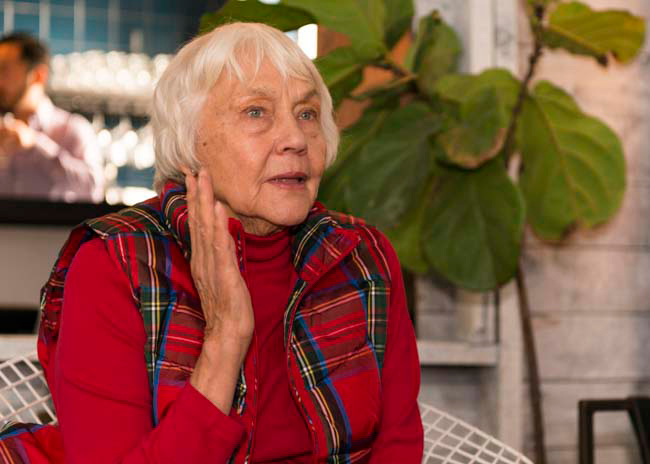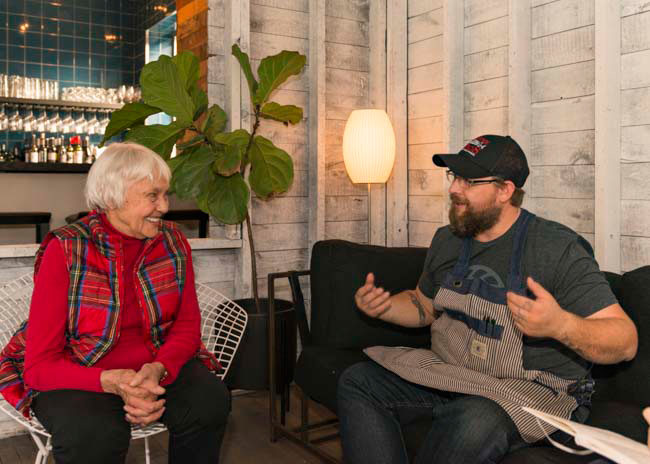
Erick Harcey is the 30-something chef and owner of Upton 43, a modernist Swedish-inspired restaurant in Minneapolis. He commutes into the city from Cambridge, where he hunts and fishes with his four boys.
Beatrice Ojakangas grew up in a Finnish farm family outside Duluth. She published the first of her 29 cookbooks in 1964. Her newest book, Homemade: Finnish Rye, Feed Sack Fashion, and Other Simple Ingredients from My Life in Food, is a memoir. She recounts not only the simple pleasures of sewing her 10 siblings’ clothes and learning to bake bread, but also how she came in second in the Pillsbury Bake-Off and had a hand in inventing Gino’s Pizza Rolls. (True story.)
What brings Harcey and Ojakangas together is not just Nordic flavor, but Nordic sensibilities. Over the course of our conversation, they bonded over country living, winding driveways, fresh dill, herring, lutefisk, and the best variety of potato (russets, of course). It didn’t take long before they were finishing each other’s sentences and occasionally answering in unison.
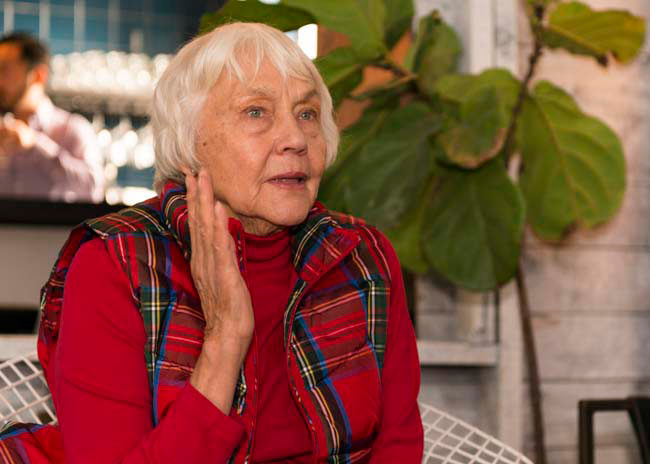
HEAVY TABLE: Beatrice, you published The Finnish Cookbook in 1964. And now, more than 50 years later, we’re talking about the “new Nordic” cuisine. What do you think about that?
BEATRICE OJAKANGAS: I think it’s great. They are doing new things in the Scandinavian countries and in Finland, but we’re in a time warp here. People think it’s just lutefisk and lefse. And that’s good stuff, but Nordic people have moved beyond it.
HEAVY TABLE: Erick, your roots are here in Minnesota, too, and your grandfather owned Kaffe Stuga in Harris, right?
ERICK HARCEY: Yes, he moved here very young. He spoke Swedish, and we said a Swedish prayer every meal. I just didn’t know any different then, but the way we ate — everything we did — I was virtually immersed in Swedish culture.
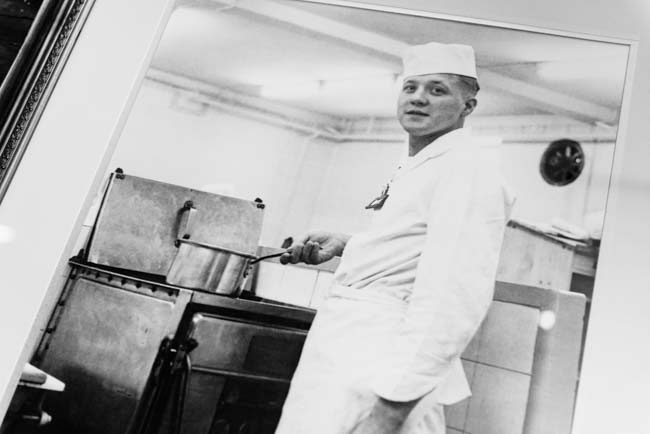
HEAVY TABLE: Upton 43 honors your grandfather’s influence, but it’s definitely not stuck in a time warp. What would he recognize on the menu here?
HARCEY: My grandfather was a chef, and his skills and what food was like then — that was very different than the skill set I was able to learn. We’ve got better technology and better equipment. But if he was still alive, I don’t think he would think the food here is that far off. I think he would understand it.
HEAVY TABLE: What flavors or techniques would he have related to?
HARCEY: The thing I remember the most is how his meals were set. There was always a fatty element, maybe a creamy element. But then he had pickles on the table and herring on the table. The way I compose a dish now has all those components on one plate.
HEAVY TABLE: When you look how people in Minnesota eat today, where do you see Nordic influences?
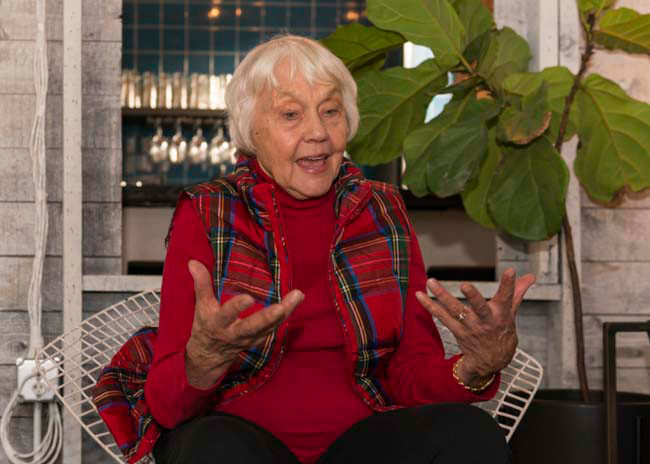
OJAKANGAS: I always wish there would be a little bit more. There’s this old saying that the Scandinavians did not come here to start restaurants. They came here to grow potatoes, to grow the wheat. The Finns came here to clear the woods and work the mines. They didn’t start restaurants. There’s an old story about a foreigner asking, “Where can we get good food here?” And the little kid says, “The best food is at home.” That’s the way the Scandinavians have always looked at it.
HARCEY: But not many people cook at home anymore. We’ve lost the culture of cooking with grandma and passing it down.
HEAVY TABLE: If you could choose one flavor or influence from Nordic cooking and make it universally beloved here, what would it be?
OJAKANGAS: What I think of is when you go into a Finnish restaurant, there’s always the smell of fresh dill.
HARCEY: Dill is fantastic, especially the flowers when they’re fresh.
OJAKANGAS: Oh, man, they’re so good. Finns just use dill by the armloads, and always fresh.
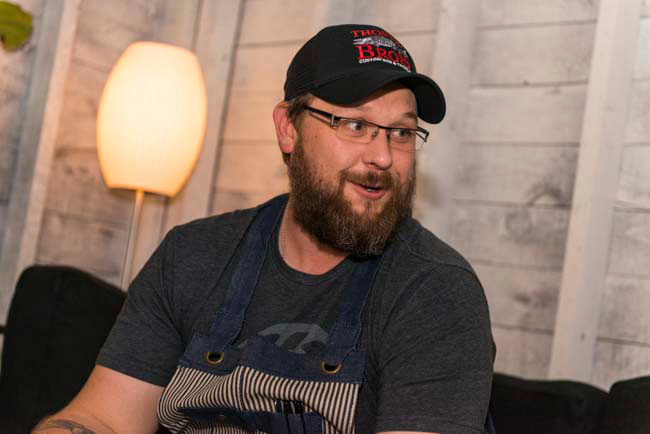
HARCEY: For me, it’s two things. Nordic cooks use onion and they use it well. Even if it’s raw, it’s not overpowering. And spices — cardamom and nutmeg and juniper berries. We only use that stuff around Christmastime. We consider it a warming spice, but used properly they just add such a great roundness to all the food. You can use them all year long.
Here, the conversation about flavors takes a sharp turn into very Nordic territory.
OJAKANGAS: I remember when we were camping in Finland, in the summer, we’d pull into the campground, and there’d be Finnish families there. They’d fire up the bonfire, put on a pot of water, and open up the trunk of the car — and it’s all full of potatoes.
HARCEY: Some of that is the farming background. You used what you had and found ways to use it and celebrate it. There’s nothing to be ashamed about having fantastic potatoes. They’re delicious.
OJAKANGAS: Especially when they’re fresh.

HARCEY: You can do everything with potatoes. We have a roasted potato ice cream here. We roast them, peel the skin off, and do a second roast to make sure they’re really dry. Then we slowly steep that in the milk.
We use russets. It’s got the right amount of starch. You know, there’s “no” starch in Yukons. Then you can crisp the skins up really nice. Another dish is we take those skins and just lightly scrape them and then fry them so it’s a true potato chip with just the skin fried up.
OJAKANGAS: You know, Finns don’t eat the skins. They’ll take their boiled potatoes and stick them on a fork and peel off the skin and …
ALL: And dunk them in butter.
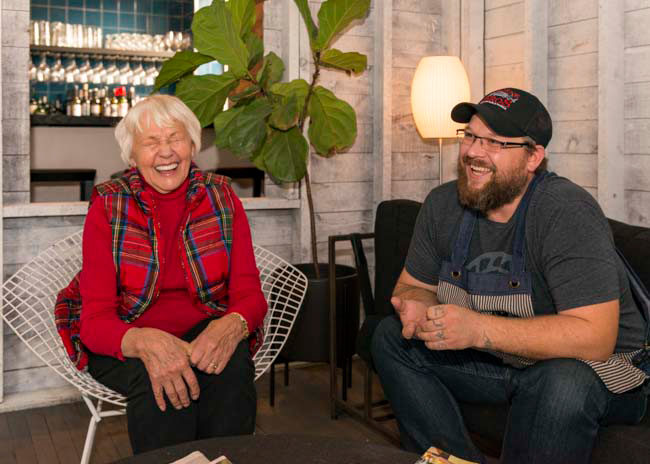
HEAVY TABLE: That was possibly the most Nordic conversation I’ve ever heard. You just spent 5 minutes talking about potatoes.
And now I’ll ask, If you could choose one flavor or influence from Nordic cooking and toss it out, just get rid of it, what would it be?
HARCEY: It’s not so much an influence, but I think there’s a notion that Nordic food is very bland, or it’s very white on the plate. And it’s not. I think color is 100 percent irrelevant. It makes for beauty, but when it comes to flavor, it’s irrelevant.
Nordic food is not bland. It’s actually very complex, when you start to understand it better. Nordic food is served compartmentalized on the table, whereas, say, with Moroccan food, everything is in one bowl. When you take time to eat a little bit of all that’s on the table, it’s extremely complex food.
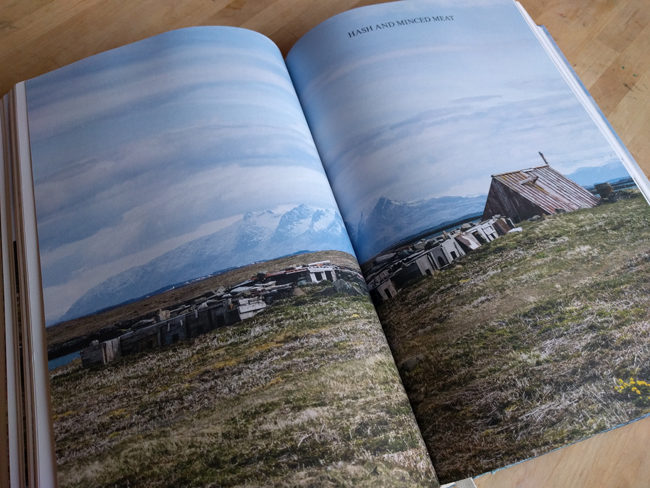
OJAKANGAS: Speaking of which, what did you learn from Magnus [Nilsson, chef at Sweden’s Fäviken, who visited Minneapolis in June]?
HARCEY: We honestly didn’t talk food very much. He came in for lunch, and I just wanted to feed him something easy, because we went fishing afterward in Chisago Lakes and I was like, man, I hope he’s a good fisherman like he said he was. So we went out, caught a bunch, and toward the last little bit of our trip he caught a 5½-pounder and a 6-pound bass, and he was just glowing.
OJAKANGAS: Oh, fer fun.
HARCEY: The food I put up for him, he loved. I didn’t want to try to impress him as a chef. I just wanted to make food he’s going to love to eat. So I did a slow-roasted lamb shoulder with yogurt and cucumbers and tunnbröd [Swedish flatbread] — basically a sandwich — and he just scarfed it down.
He’s a really genius-level person.
OJAKANGAS: He’s only 32. Well, Erick, you’re not much older than that.
HEAVY TABLE: Beatrice, you’ve just written a memoir after 29 cookbooks. Erick, do you ever have the urge to put your story down in writing?
HARCEY: I do. Right now, it’s a matter of how and what. It’s something I’ve never done much of, though. I can’t even spell.
OJAKANGAS: Just say it. That’s all you have to do is say it on paper.
My memoir just starts out with my background: who my grandparents were. And I think that is so important, to keep the legacy of a family going. Like, where did you get your interest in food? I can follow the interests and the talents of my family back to my grandparents.
HARCEY: Right. That’s a lot of what my story would be: memories of what we ate, and what we were doing and why.
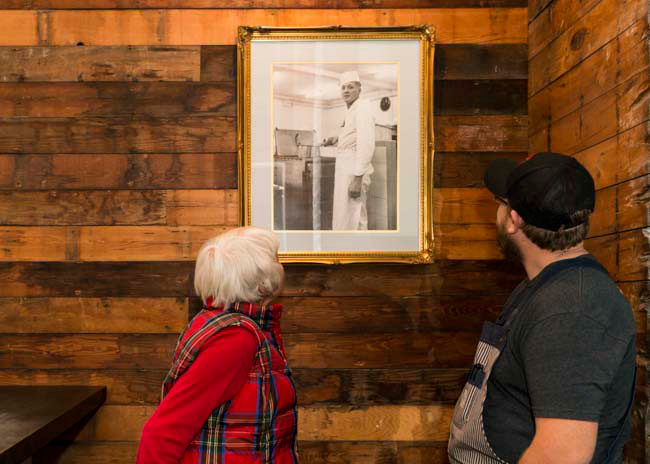
Erick got up to show Beatrice the picture of his grandfather that hangs in the bar. And the conversation continued to range widely and warmly through a 30-minute Minnesota good-bye.

